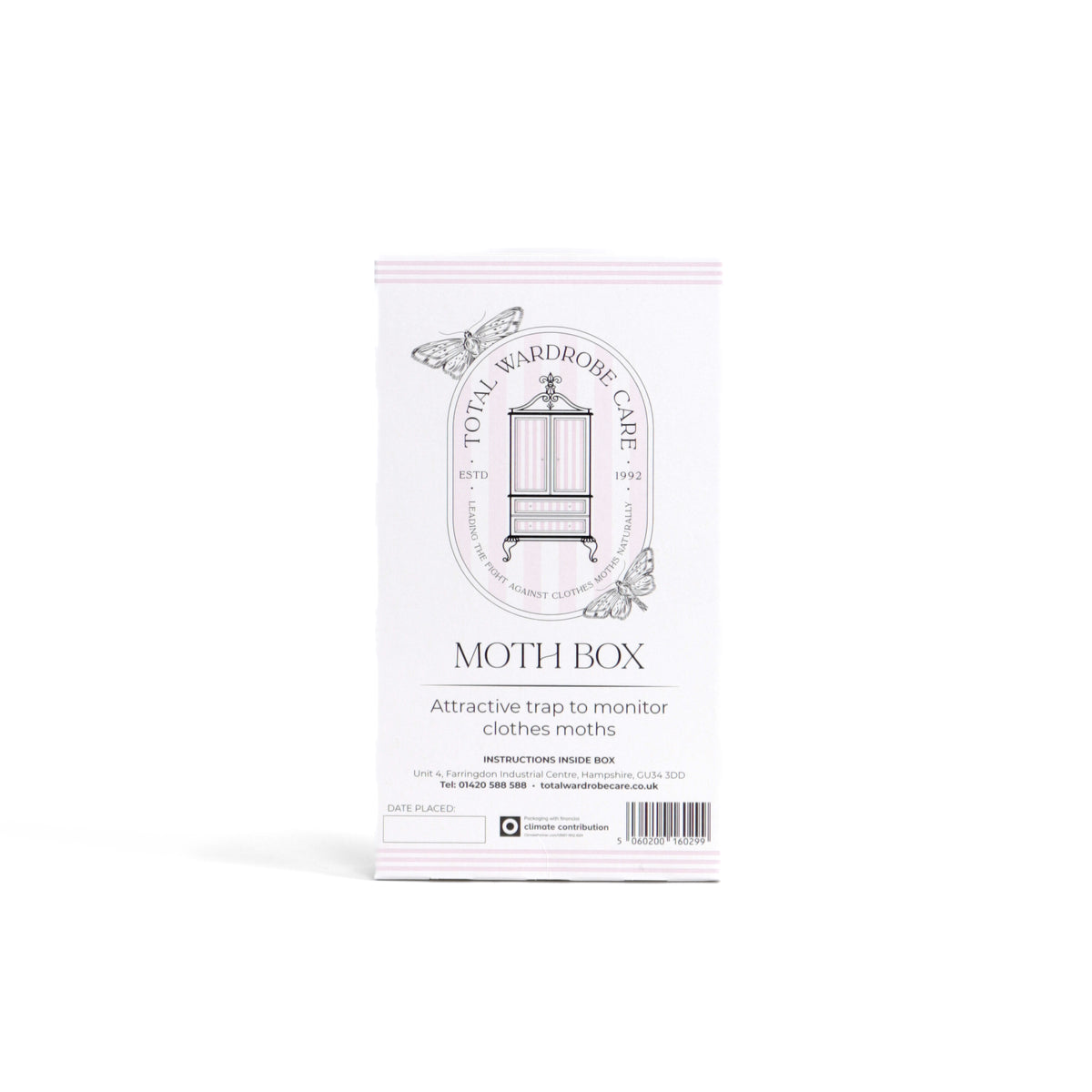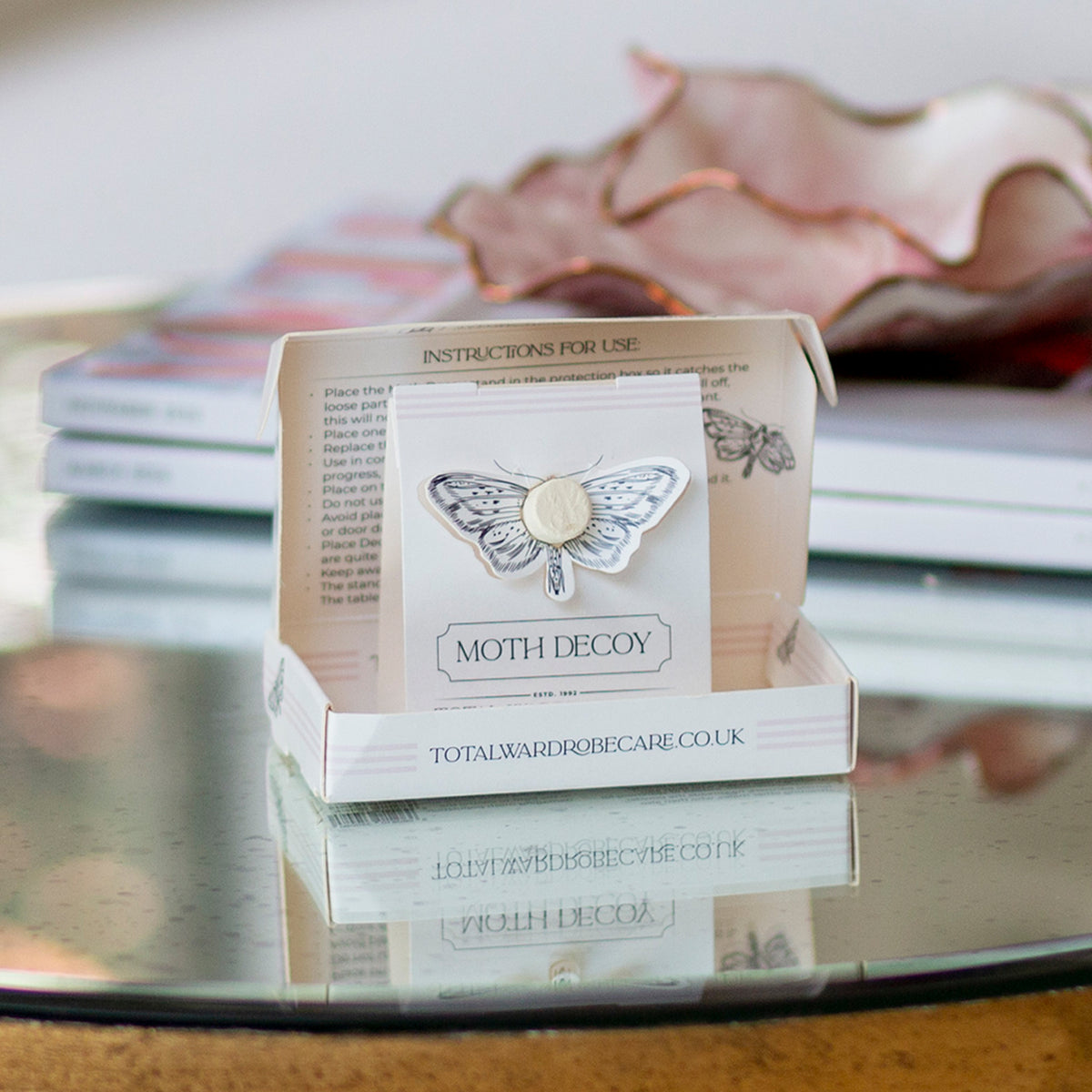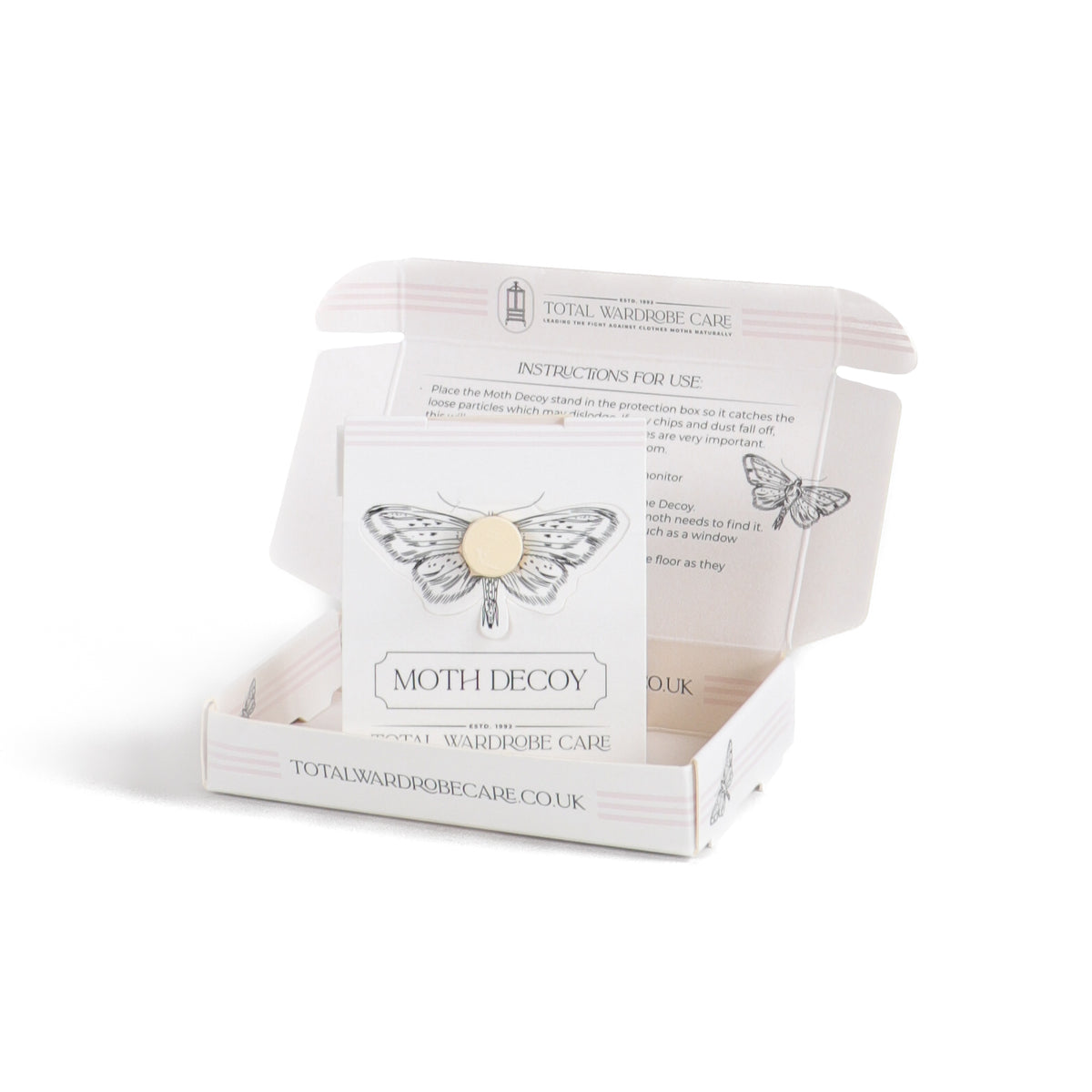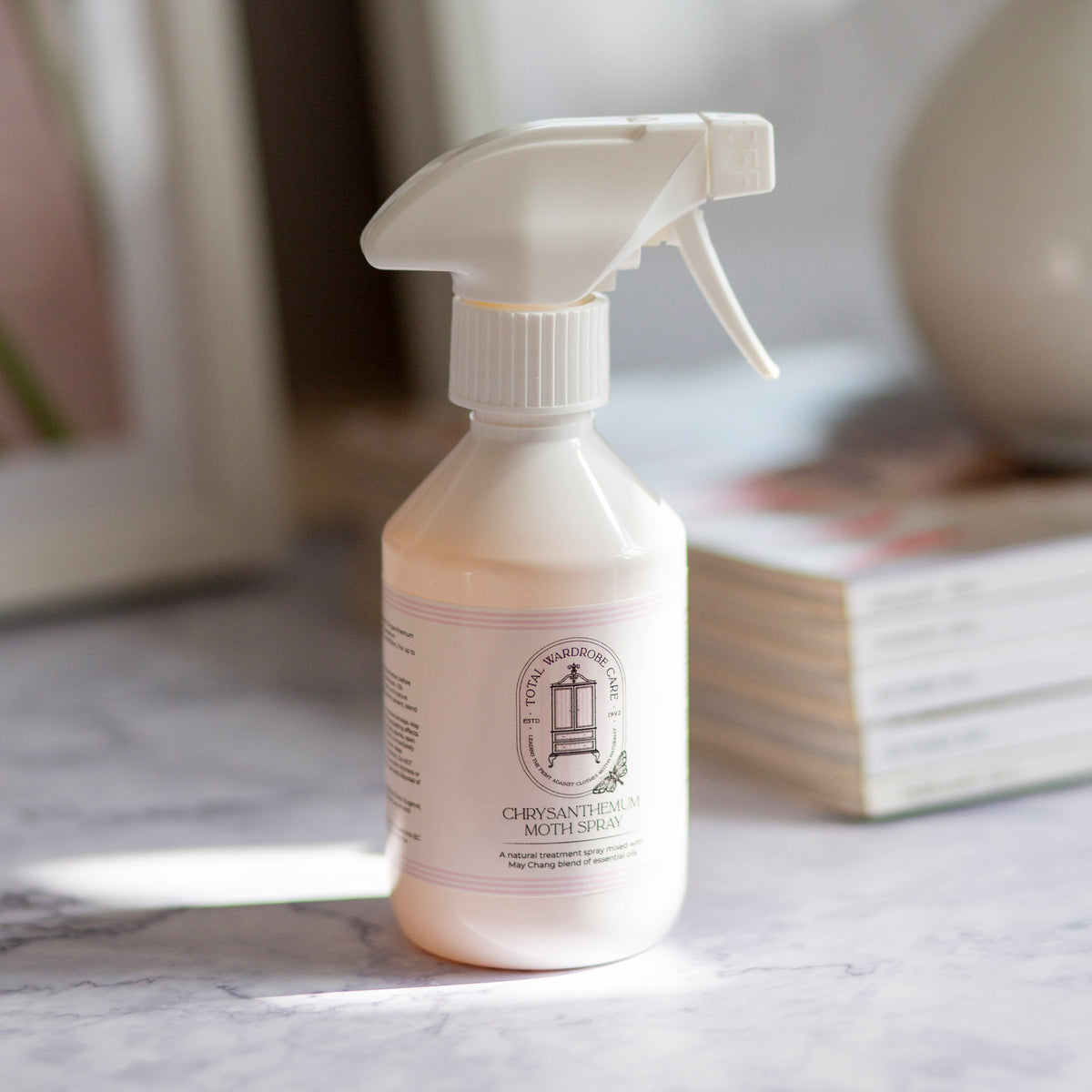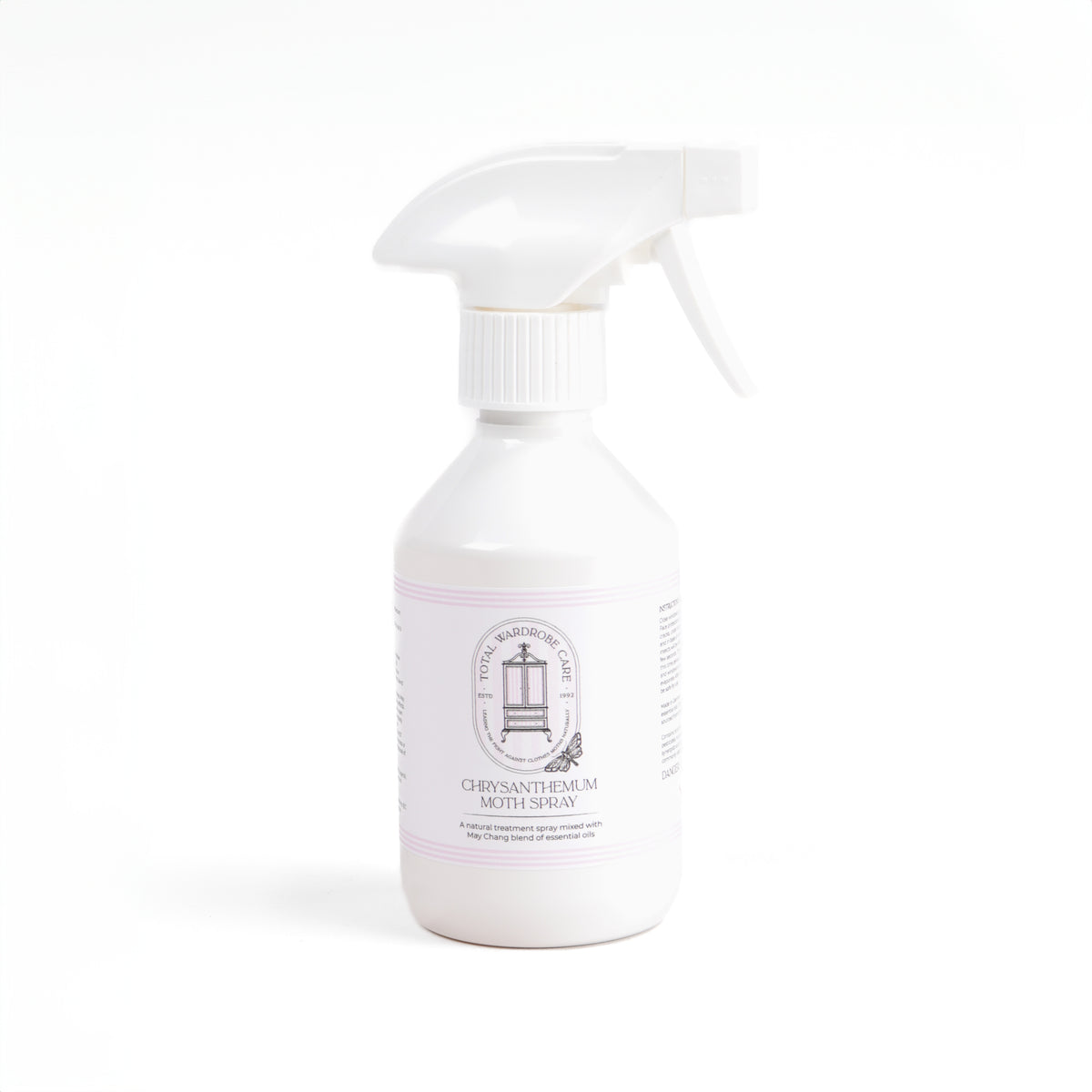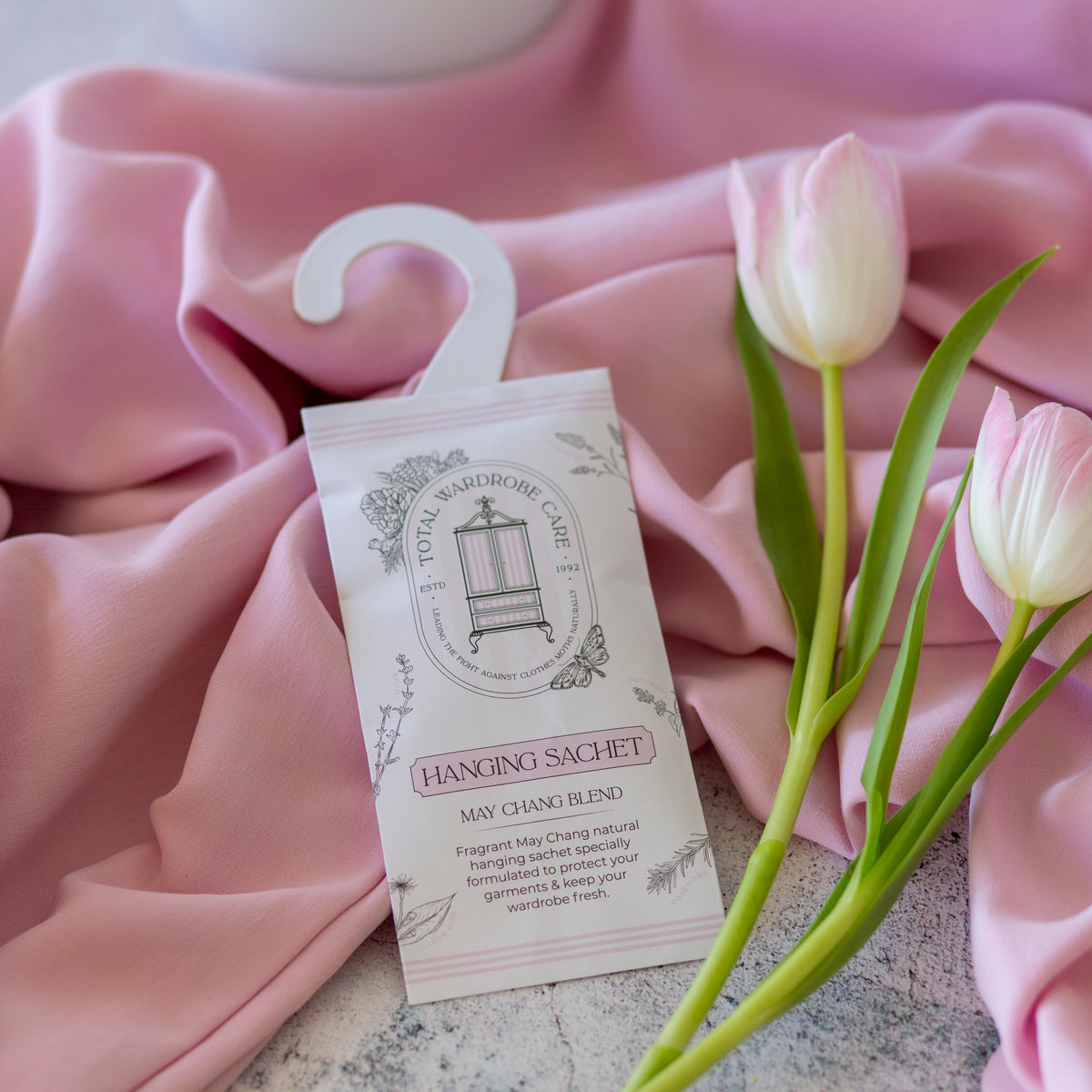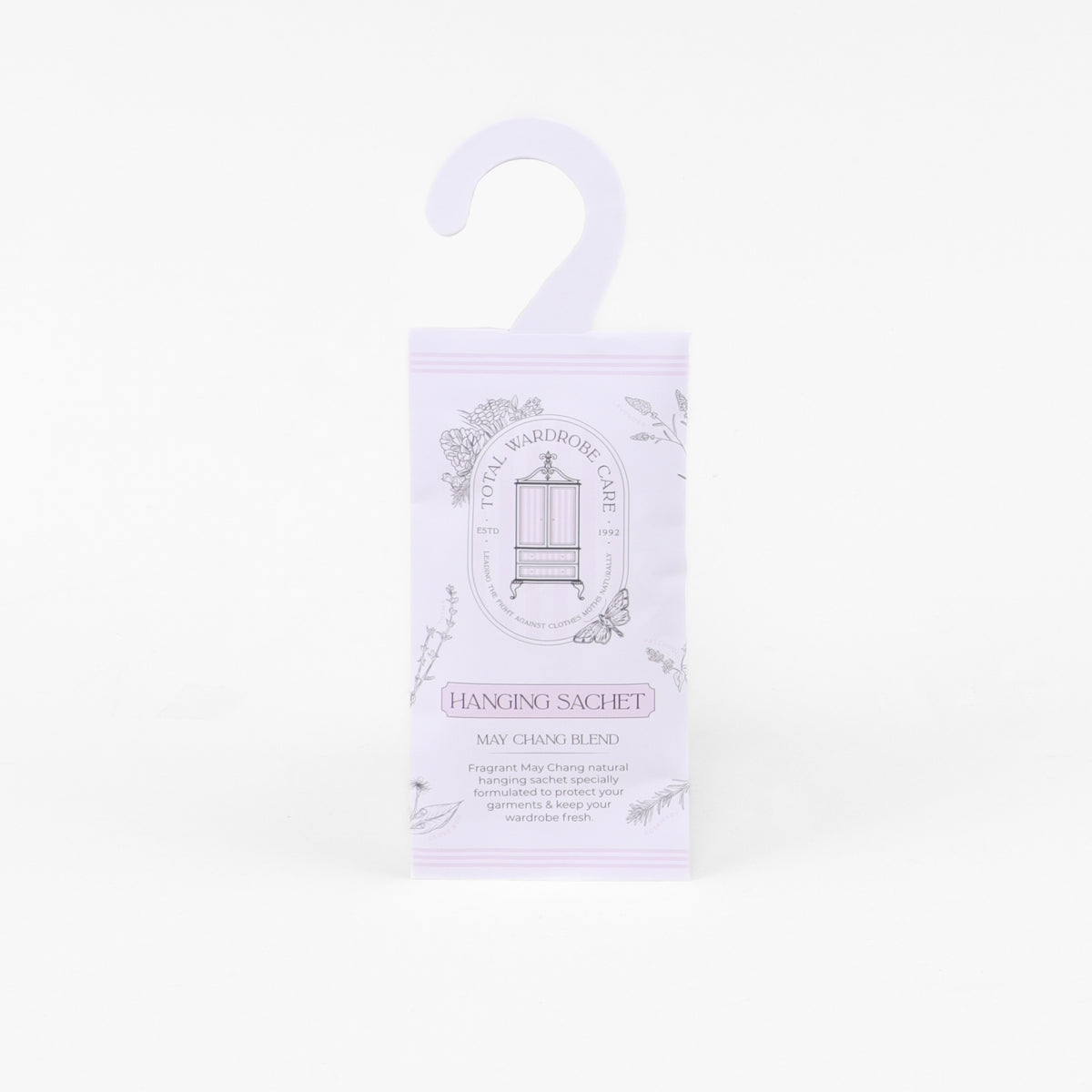The clothes moth goes through different phases in its lifecycle: egg, larvae, pupae, and adult. However, it’s only the larval phase that is responsible for the destruction of materials because the larvae have chewing mouth parts. The jaws at the front of their body open and close sideways like automatic doors and they can make their way through even tough fibres like leather and upholstery, which is why any material of natural origin is not safe from clothes moth larvae in your home.
We always emphasise the importance of treating each phase of the clothes moth lifecycle in order to get rid of a full-blown infestation however, because the physical destruction is caused during the larval phase, we are frequently asked what kills moth larvae? So, this blog focuses specifically on how to get rid of moth larvae.
WHY DO MOTH LARVAE EAT CLOTHES?
Clothes moth larvae feed on keratin, a protein found in natural fibres such as silk, wool, feathers and fur. Keratin is also found in bodily secretions, sweat being one, we'll leave the rest to your imagination and cover them with a simple ‘etc!’ It is for this reason that you will find clothes moths infesting in wardrobes of course, because inside the wardrobe they can gorge themselves on natural fibres, uniquely human extracts and dust which includes lots of skin cells. They also attack soft furnishings made of natural fibres such as wool carpets and rugs and furniture upholstered with wool or horsehair.

WHAT KILLS MOTH LARVAE?
Moth larvae are what cause damage to your clothes and soft furnishing. Killing the moths can break the lifecycle and prevent further infestations however, to tackle the immediate infestation you need to kill the moth larvae.
DOES WASHING & DRY-CLEANING KILL MOTH LARVAE?
Let’s start with clothes. Some items may be so damaged that they are beyond repair and should be thrown away. However, garments with small areas of damage can always be mended, even on cashmere. So in these instances opt for dry cleaning (if the garment allows) as this will kill the larvae, and then arrange for the item to be mended. Our sister company, The Wardrobe Curator offers bespoke alterations and a mending service. They are very skilled at dealing with lots of moth-related damage.
To get rid of moth larvae in the wash, the temperature must be over 55◦C. Now, we have read that the trend to wash on a 30◦C cycle to protect the environment has contributed to the increase in clothes moth numbers and this doesn’t sit well with me.
Higher value items that would most likely be infested with moth larvae such as cashmere, silk and wool suits cannot be machine washed anyway and even before the trend to wash at 30◦C, most washing machines had and still have a regular wash cycle of 40◦C, which is still not high enough to kill the larvae. In fact, we would only use the 60◦C cycle for sheets and towels because a temperature that high would ruin or certainly reduce the life of most garments.
DOES FREEZING CLOTHES KILL MOTH LARVAE?
If dry cleaning is not an option, place the garment in a sealed plastic bag and put it in the freezer for a minimum of two weeks at -18 degrees. This will kill the moth eggs and larvae. Then hand wash your clothes with a gentle detergent and store in a protective bag. Be aware that storing in plastic bags encourages mould, so make sure you use breathable moth-proof storage bags like our Non-Woven Knitwear Bags.
WILL REGULAR HOUSEKEEPING KILL MOTH LARVAE?
Regular cleaning is imperative. Clothes moths don’t like a disturbance and will lay their eggs in places where they know their offspring will be able to hide and feed undisturbed. That’s why you’ll find clothes moth larvae feeding and hiding in cracks in wardrobes, around the edges of carpets, on the underside of rugs and hard-to-reach areas underneath furniture.
Using a vacuum regularly will clean away larvae and frass (moth poo). You may need to enlist help to move heavy furniture and while you’re there be thorough, this means using the crevice tool to get the dust right at the edge of the carpet. If dust is ground in, use a lightly damp cloth to loosen it before vacuuming and then wipe down skirting boards.
WHAT SPRAY KILLS MOTHS?
Our natural Chrysanthemum Moth Spray kills larvae on contact. It uses natural pyrethrum, extracted from the Chrysanthemum flower. When cleaning out your wardrobe, spray the cracks and crevices.
For the rest of the room, once you have thoroughly vacuumed and whilst furniture has been moved, spray around the edges of carpets, under rugs, under furniture and anywhere you have seen moth larvae. Close the doors to the room, windows and curtains and leave for 4 hours, then open everything up including windows and leave for another 4 hours.
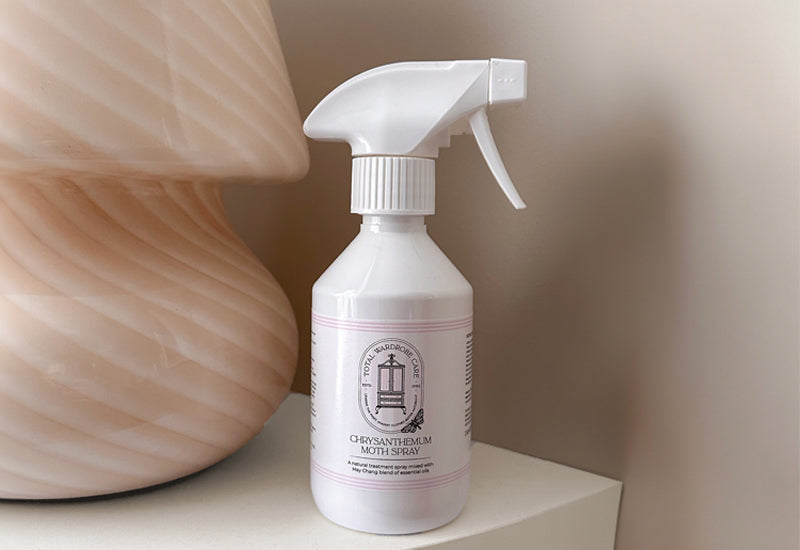
WILL A STEAM CLEANER KILL MOTH LARVAE?
Steam cleaners are extremely useful for getting creases out of delicate items that can’t be ironed, but the temperature of a steam cleaner means that it will also kill moth larvae. We stock professional steam cleaners and we use ours religiously.
THE IMPORTANCE OF TREATING ALL STAGES OF THE CLOTHES MOTH LIFECYLE
We mentioned this earlier and we make no apology for reiterating it again here. It’s important to treat all the life stages of the clothes moth in order to successfully combat an infestation and from then on, it is absolutely key to remain vigilant.
We have created a range of products suited to each stage of the clothes moth lifecycle and we urge you to explore the website and to read our Expert Tips & Blogs. A great place to start is How to Solve a Clothes Moth Infestation or 5 Steps to Get Rid of Moths.
NEED HELP?
Feel free to Contact us by email or phone if you have any questions about your particular clothes moth problem.



